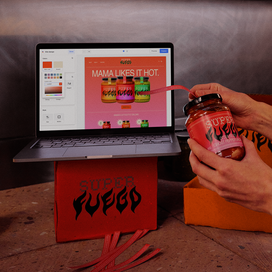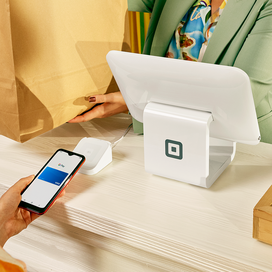Table of contents
As consumers become increasingly accustomed to receiving their orders as soon as the next day after ordering, the delivery phase of the supply chain has become even more critical for retailers to nail down.
The delivery phase of the supply chain is when the products actually reach customers. This crucial step involves all logistics required to move products from the manufacturing facilities to customers. The primary aspects of the delivery phase include managing transportation modes, selecting carriers, optimizing routes, tracking shipments, and ensuring on-time and intact deliveries. This part of the supply chain also involves managing distribution centers, warehouses, and inventory levels to meet customer demands while finding cost-saving efficiencies along the way.
Let’s dive into why optimizing the delivery phase of the supply chain is critical for both a positive customer experience and for reducing operating costs.
Getting started with fulfillment
There are several ways retail businesses opt to fulfill orders. Larger retailers typically utilize direct-to-consumer (DTC) fulfillment, which is when the business owns or leases their fulfillment centers, manages all inventory, and handles the shipment of products to customers. Retail businesses which are growing quickly or need to free up funds may also explore a third-party logistics (3PL) fulfillment option. 3PL is when businesses outsource the physical warehouse, fulfillment, and shipping needs to a trusted third-party distribution center to manage.
When selecting the right transportation for your products, start with your company’s delivery requirements. These specifications include the types of products you sell (are they bulky, variable, fragile, or perishable?), the volume of products which will need to be shipped based on your demand forecast, popular geographical areas you serve, and desired delivery times.
Omnichannel retailers will also need to account for using their stores as mini fulfillment centers. This includes curbside pickup and buy online, pick up in-store (BOPIS) options, which are growing in popularity. Using Square, you can enable in-store pickups so customers can easily order online and pick up in-stores later. By enabling the curbside option, buyers will also see the option for curbside pickup at checkout and receive a text message when their order is ready. To avoid inventory tracking issues, it’s important to use a warehouse management system that marks orders clearly, and corrects by fulfillment type and flags when orders are delayed beyond your predetermined outbound service-level agreements (SLA).
Learn how to set up in-store pickup and curbside pickup.
Selecting a cost-efficient and reliable carrier
Once you’re clear on your delivery requirements, you’ll want to define your carrier requirements. Carrier requirements typically include pricing, reliability, service area, and whether the carrier can handle your forecasted shipment volume. If your products require special care or packaging, you’ll also want to check that suppliers can meet those needs. While you can check online for reviews, seeking recommendations from peers in your industry is the most useful way to narrow down your list of carriers.
Once you have your short list of suppliers, you’ll want to request quotes to compare prices. Quotes should include a detailed description of your fulfillment needs and the associated costs. From here, it’s critical to negotiate favorable terms and rates. Shipping is often one of the largest expenses for retailers, eating into their profit margins, so securing favorable terms early on will be advantageous. This may include volume discounts, service guarantees, and flexibility in case your business needs change. Finally, you’ll want to check for insurance and liability coverage. The carrier you move forward with should have adequate insurance and liability coverage in case of loss, damage, or theft of your goods during transit.
If you outsource, your carrier will be responsible for optimizing routes. If you’re delivering orders with your own employees you’ll want to spend time analyzing the areas which have the highest density of orders, taking into account busy traffic times in order to optimize your delivery routes.
Finally, customers are often more forgiving as long as brands proactively communicate when an order is delayed. For example, if you promise your customers that orders will ship within three days of being placed but your team is not able to meet that promise due to increased demand or labor shortages, you can send an automated email with Square Marketing to let customers know before your customer care team is inundated with inquiries. Oftentimes, retailers will include a discount or another token of appreciation in these types of circumstances.
Fleet and warehouse management best practices
Fleet management is required for on-time delivery, keeping costs down, and regulatory compliance. In order to optimally manage an agile fleet, supply chain management and visibility are paramount. This means all stakeholders should have access to real-time updates on where orders are at any given time. It’s helpful to set operational key performance indicators (KPIs) to reinforce your delivery goals. Common goals to benchmark your business against are delivery complaints or inbound and outbound SLAs, which track the amount of time it takes employees or 3PL partners to process inbound and outbound items.
Luckily, due to advancements in inventory management software like Square for Retail, businesses can stay up to date on current and incoming inventory levels across all locations while keeping track of pending orders across all sales channels and getting access to insightful reports around inventory, sales, and fulfillment to keep the business on track and meet customer expectations.
By having a strong grasp on inventory management, aligning stakeholders around fulfillment KPIs, and continuously optimizing routes and resources to ensure on-time delivery, retailers of all sizes can deliver their products in a cost effective and timely manner that builds brand loyalists for years to come.
![]()










